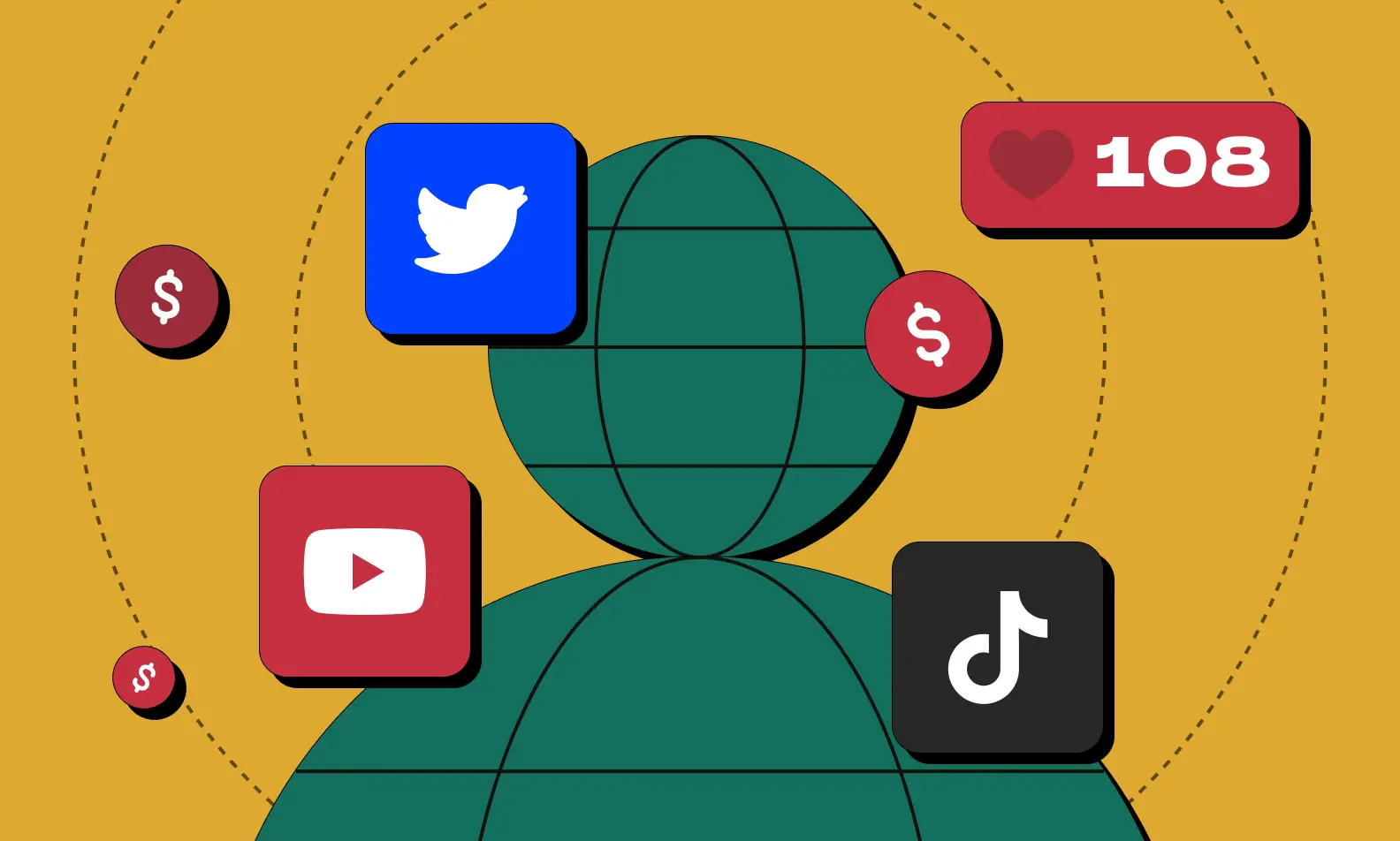After spending two messy years and hundreds of hours trying to build stable creator income, I finally stopped white-knuckling YouTube CPM swings and built a resilient stack. The breakthrough came when I split my workload into owned assets (email + site + subscription app), platform-specific plays, and data-backed pitches. This guide is the 90-day playbook I wish I had-step-by-step, with timelines, tools, and the exact metrics brands care about.
Overview: What You’ll Build (Time: 90 days, Difficulty: Medium)
By the end, you’ll have: (1) two reliable revenue streams live, (2) a simple website and email list you own, (3) a working subscription/membership option, (4) platform-specific monetization turned on, and (5) a pitch-ready metrics sheet for brand and creator partnerships.
Prerequisites (1-2 weeks)
- Clear niche statement: who you help, with what, and why you’re the best person to do it.
- Baseline gear and workflow for weekly content (camera or phone, mic, editing app).
- One primary platform chosen (YouTube, TikTok, Twitch, or Instagram) plus a secondary for repurposing.
- Basic analytics access: YouTube Studio, TikTok Analytics, or Instagram Insights.
- Business basics: separate bank account, simple bookkeeping, and a lightweight contract template.
Step 1: Pick Your First Two Revenue Streams (Week 1-2)
Don’t make my mistake of launching five products and starving all of them. Start with two streams that match your content cadence and audience’s willingness to pay.
- Subscriptions/Memberships: Patreon tiers or a lightweight subscription via Audiorista if you have evergreen lessons, audio courses, or premium feeds.
- Sponsorships/Affiliates: If you already get 10k+ monthly views, sponsors or affiliate links can convert fast with minimal build time.
- Digital products: Templates, presets, or mini-courses if your content is how-to driven.
Step → Action → Result
1 → Map your next 8 weeks of content → See where promos can naturally live.
2 → Choose 2 streams that fit those formats → Avoid workload spikes and burnout.
3 → Draft one clear offer per stream → Audiences convert when the value is obvious.
Success indicators: you can state your offer in one sentence; you have a promo slot in at least every other post; you know what “good” looks like (e.g., 1-3% click-through on affiliates, 0.5–1.5% of total audience in paid tiers over three months).
Step 2: Build Owned Assets: Site + Email + Subscription (Week 2–4)
I waited too long to build my email list and paid for it when an algorithm tweak halved my views. Owning distribution is non-negotiable.

- Simple website: a home page, one opt-in lead magnet, and a “Work With Me” page.
- Email list: weekly value email, not just promos. ConvertKit or similar will do.
- Subscription app: if you have serial content, Audiorista can turn it into a paid app/channel with in-app subscriptions and private feeds.
Step → Action → Result
1 → Create a single-page site with a clear promise → Visitors know why to subscribe/buy.
2 → Add one irresistible lead magnet (checklist, template, bonus lesson) → 2–5% visit-to-subscribe is achievable.
3 → Set a weekly email cadence (every Tue/Thu) → Compounding trust that converts sponsors and product sales.
4 → Package premium content in Audiorista (tiers, private RSS) → Predictable monthly income outside ad volatility.
Common mistakes I made: too many pages (no one reads them), no clear CTA, and burying the subscribe form. Keep it simple and above the fold.
Step 3: Platform-Specific Monetization Plays (Week 3–6)
Each platform pays differently. Tailor the content and the ask.
- YouTube (ads, memberships, Super Thanks, sponsors): Aim for 45–65% average view duration, searchable titles, and one midroll at the narrative midpoint. Use the Community tab for weekly polls to seed video ideas and pre-qualify sponsors.
- TikTok/Shorts (brand deals, live gifts, affiliates): Hook in 1 second, add a pinned comment with the CTA, and drive to email or your Audiorista premium feed for deeper value.
- Instagram (sponsored Reels, Shop, subscriptions): Use Stories for behind-the-scenes; hard CTAs perform better in Stories than feed posts in my tests.
- Twitch (subs, Bits, sponsors): Create subscriber-only VODs and monthly challenges; thank supporters by name and track retention by cohort.
- Patreon (tiers): Name tiers by outcomes, not features (e.g., “Creator Sprint” vs “Gold Tier”). Communicate benefits monthly so churn doesn’t creep up.
Step → Action → Result
1 → Turn on all native monetization you qualify for → Capture baseline revenue.
2 → Repurpose 1 long-form piece into 3–5 shorts each week → More surface area for discovery without doubling workload.
3 → Insert one native CTA per post (not three) → Higher conversion, less fatigue.
Step 4: Data-Backed Brand and Creator Partnerships (Week 5–8)
What finally worked for me was pitching with creator-grade metrics, not just vanity stats. Brands want “fit + performance + predictability.”
- Metrics to track: average view duration, percentage viewed, CTR on links, conversion rate on affiliates, CPM history, audience geography, device split, and email open/click rates.
- Pitch template: who your audience is, 2–3 content concepts, sample timeline, deliverables, past performance (with screenshots), and a simple rate card with bundle options.
- Use Mozaic to centralize payouts and track multi-platform deliverables. It saved me from missed invoices and version chaos.
Step → Action → Result
1 → Build a one-page media sheet in Google Slides → Faster replies and fewer back-and-forths.
2 → Warm outreach to 10 aligned brands/week → 10–20% reply rate with targeted pitches.
3 → Collaborate with 1–2 creators per month → Audience cross-pollination without ad spend.

Rate anchoring tip: offer three bundles-Lite (1 post), Core (1 long + 3 shorts), and Launch (multi-platform + email)-and price by outcomes (expected reach/CPM) rather than time.
Step 5: Optimize and Scale (Week 8–12 and ongoing)
Once your flywheel spins, optimize ruthlessly. The goal is recurring revenue and less platform risk.
- Pricing tests: nudge memberships +10% with an added perk; watch churn for two cycles before rolling out globally.
- Offer ladder: free content → email lead magnet → $9 starter product → $49–$149 course or Audiorista subscription → premium coaching.
- Automation: evergreen email sequences, retargeting warm viewers, and a quarterly “best of” re-release.
- International: add captions/subtitles; localized landing pages can lift conversions 10–20% from my tests.
Step → Action → Result
1 → Monthly revenue review by stream → Double down on the top two, sunset the laggards.
2 → Build one SOP per workflow (publishing, sponsors, email) → Delegation-ready and less decision fatigue.
3 → Quarterly audience survey → New product ideas from real demand, not guesses.
Troubleshooting: Pain Points I’ve Hit (and Fixed)
- Low affiliate conversion: Your CTA is likely vague. Fix: show one specific outcome and add a comparison clip. Aim for 1–3% CTR from engaged platforms.
- Brand ghosting after interest: Send a 3-bullet recap, timeline options, and a calendar link within 24 hours. Include 2 creative hooks; it reactivates about 30% of stalls.
- Membership churn spikes: Add a “what’s new this month” email and a quarterly member-only live. My churn dropped from 9% to 5% in two cycles.
- Overwhelm managing payouts/content: Centralize with Mozaic; track deliverables by campaign and automate reminders.
- Algorithm dip panic: Shift to email and Audiorista premium drops for two weeks while testing new hooks. Don’t disappear—consistency recovers reach.
Advanced Tips: Building for Durability
- Subscription moat: Use Audiorista to package serialized content (audio lessons, behind-the-scenes cuts) with private RSS and app access—sticky by design.
- Data room for partners: A shared folder with anonymized audience insights, past performance screenshots, and testimonials speeds approvals.
- Creator portfolio bets: Allocate 10–15% of time to experimental platforms or formats. Document results and kill quickly if they don’t move core metrics.
- MrBeast lesson applied: He spreads risk across ads, products (Feastables), and traditional media. Your version might be ads + subscription + a small physical product—don’t overextend until two streams are steady.
- Community councils: Invite 10 superfans to a private chat; preview offers and get fast feedback. It’s my highest-signal product lab.
What Good Looks Like: Metrics Targets
- Email: 35–50% open, 3–7% click on core offers.
- YouTube: 45–65% average view duration, 5–10% end-screen CTR to the next video.
- Affiliates: 1–3% CTR, 3–10% conversion on warm audiences.
- Memberships: 0.5–1.5% of total audience paying within 3–6 months; monthly churn under 7%.
- Sponsorships: Effective CPM equal to or better than your platform ad CPM; on YouTube, aim for 1.5–3x ad CPM.
Quick Pitch Template (Copy, Personalize, Send)
Subject: Idea for [Brand] → Reaching [Your Niche] with Proof
Hi [Name] — I create [format] for [audience]. Recent videos averaged [views] with [avg view duration] and [CTR] on product links. I’ve got two concepts tailored to [Brand]: (1) [Concept A: outcome], (2) [Concept B: outcome]. Deliverables across [platforms] within [timeline]. Happy to share screenshots and past results. Bundled rate options below. Shall I send a one-pager?
90-Day Timeline (Reality-Based)
- Weeks 1–2: Choose two revenue streams, draft offers, map content, set baseline metrics.
- Weeks 2–4: Launch site + email + lead magnet; configure Audiorista premium if applicable.
- Weeks 3–6: Turn on platform monetization; ship weekly long-form + shorts; add one CTA per post.
- Weeks 5–8: Build media sheet; 10 warm pitches/week; one creator collab.
- Weeks 8–12: Optimize pricing, automate email, survey audience, retire underperforming offers.
TL;DR – The Sustainable Stack
- Own distribution: website + email from day one.
- Start with two revenue streams; make one recurring.
- Tailor monetization to each platform; repurpose smartly.
- Pitch with data, not follower counts; centralize with Mozaic.
- Package premium in Audiorista; reduce algorithm risk.
- Review monthly, cut ruthlessly, and double down on what works.
You’ll know it’s working when revenue isn’t spiking with every algorithm mood swing, sponsors start asking for renewals, and your premium subscribers show up for what only you can deliver. Keep the flywheel simple, protect your energy, and let compounding do the heavy lifting.
Leave a Reply